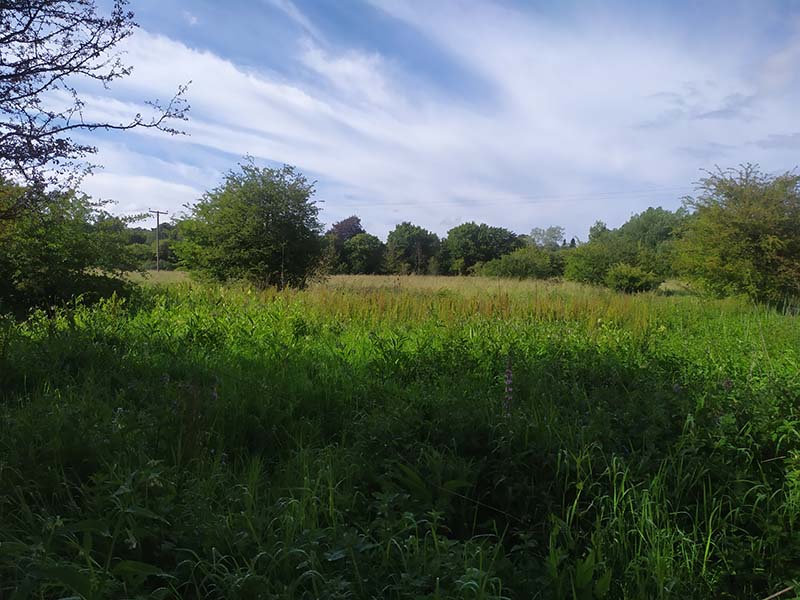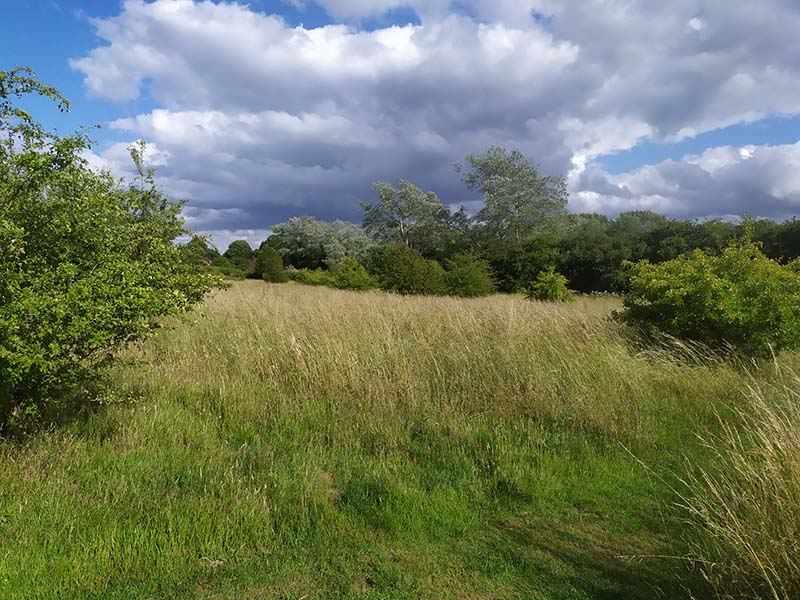We have three separate meadows that are all quite different. We need to formulate our approach to management and it is clear the strategies for each one will vary somewhat by its unique characteristics. Traditionally they would have been maintained as water meadows for growing hay for animal feed, but this practice has long passed and the area has been left largely untouched since.
As with anything our plan centres on a gentle touch approach with monitoring to learn what works well, it is often the case that doing nothing would be better than misguided good intentions with unforeseen consequences. With caution as our guide we can adapt our behaviour and repeat our successes, rather than our mistakes. All of our meadows have a wide variety of species, but some have come to dominate and create mono-cultures.
Monkey Bridge Meadow has been managed for a number of years with conservation grazing by a small herd of Dexter cattle and is mown once a year. The cattle prune the willow trees and brambles preventing the land becoming scrub and they kick the ground up nicely allowing less dominant plant species a chance to establish. It has the best mix of wildflowers of all our meadows but it is dominated by Ragwort, Buttercups, stinging nettles and thistles. There are certain species of moths that only lay their eggs on certain varieties of thistle, so we still want some of these things, they are native and part of our ecosystem after all. The yearly mow is done in mid June to target the Ragwort, Nettles and Thistles before they flower and seed. It does seem a shame as there are many insects that benefit from those flowers, but they are exceptionally dominant and not all areas are mowed to be sympathetic to species who depend on them. Other wildflowers benefit from this and flower after the dominating perennial weeds have been taken out of there way. This year it has caused a second bloom of Ground Ivy that had finished flowering anyway.
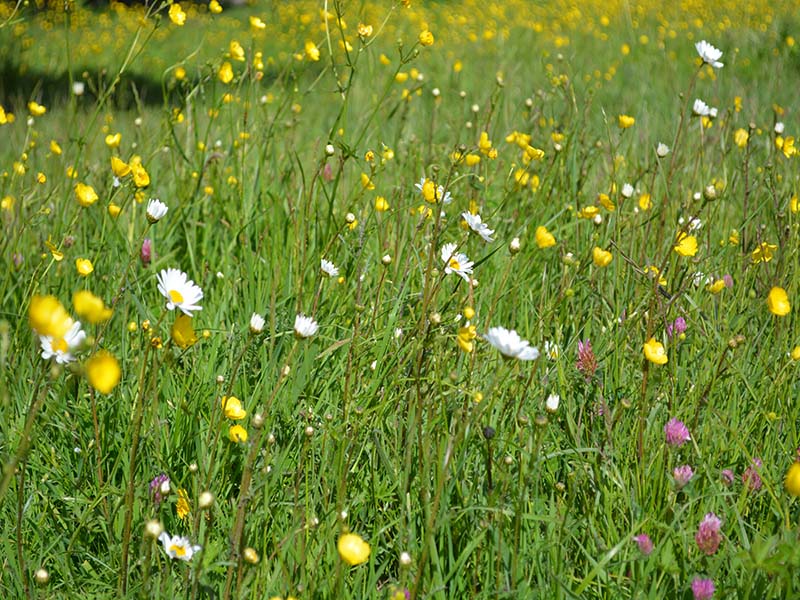
Meadow 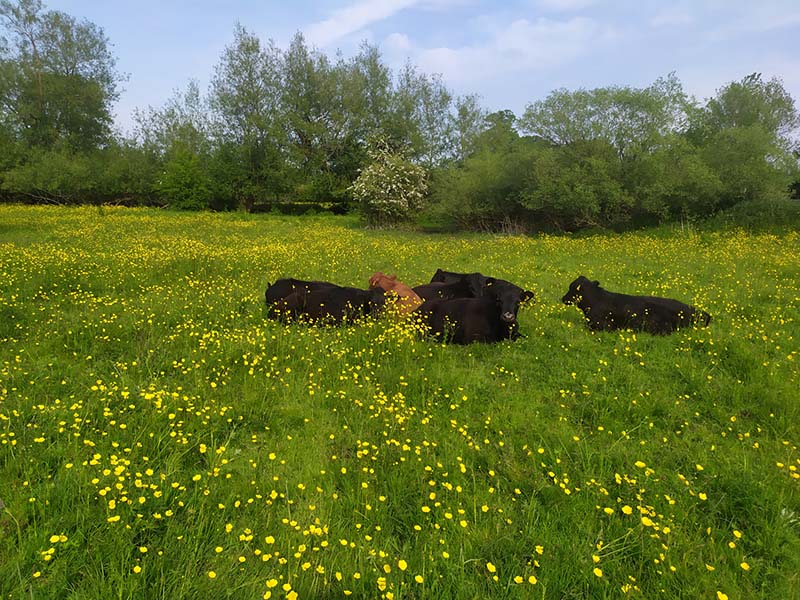
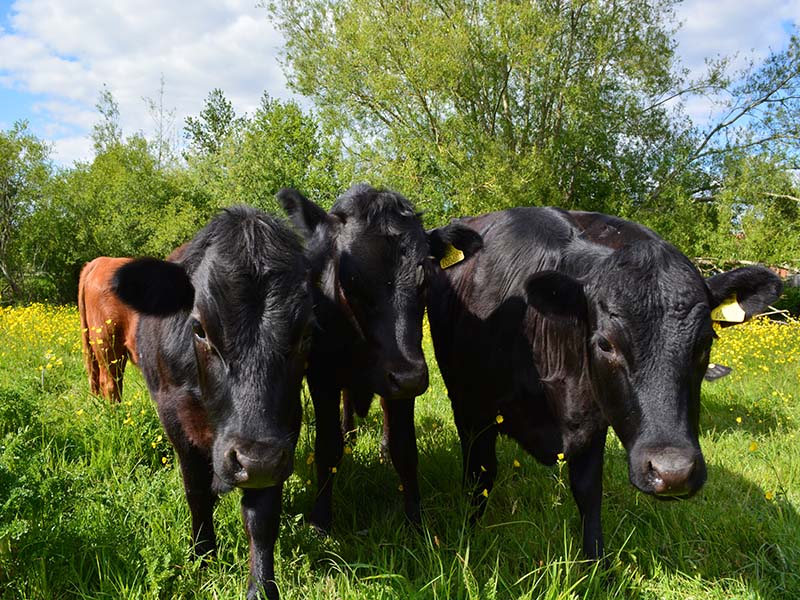
Northcroft Meadow (wet) is the largest of our meadows and regularly floods in winter. This area of land is a classic traditional water meadow and hasn’t been touched for many years by the looks of it. It is a beautiful wilderness but not particularly accessible. In attempting to find the edge of the lake we walked through vegetation up to our armpits. It has a great mixture of riparian plants in the wetter areas that are perfect just as they are. Watermint, Gypsywort, Loosestrife, Iris, Reeds, Rushes, Hemp-Agrimony, Water Forget-Me-Not. It would be nice to mow a path in so the public can actually get to the lake and see it. The drier side of this meadow is dominated with thick marsh grasses and bindweed. There are occasional patches of Vetch, Birdsfoot Trefoil, Clover and other flowers. I would anticipate a mow here and there on certain sections would benefit the diversity. The area is obviously popular with Badgers, Rabbits and Deer so we need to be careful to to upset them too much. There is also some old waste dumped which sounds bad, but actually this is another case of think before you act. Rusty tin sheeting lying on the ground looks unsightly and dangerous but a lovely place to warm up in the sun if your a reptile. The basic plan is to mow a path to provide the public with a pleasant and safe circular walk, then maybe yearly mow a certain area avoiding the badger set. Maybe transplant some wildflowers in from other areas.
Northcroft Meadow (dry) on the north side of Moor Lane would also have been traditionally a hay making field. It has old hedgerows that are more like avenues of trees now and areas that have started to return to scrub and woodland. There are many paths of desire cut across the field by the public who walk here and evidence it is well used. Lots of evidence of small and large mammals and birds of prey, so again wouldn’t do too much here, above mowing paths. Progressive small area mowing and plug planting could be considered to improve wildflower diversity. There are occasional clumps of Scabious, Knapweed, Vetches, Oxeye Daisy and a single Poppy; but these are heavily out-competed by dominant grasses and perennial weeds. There are some young Oak tress growing in the upper reaches. The hedge has grown way beyond even being a hedge again, it is a dense compacted line of mature trees, it might be an interesting idea to plant a hedge either side and create a wider strip of super hedge.
